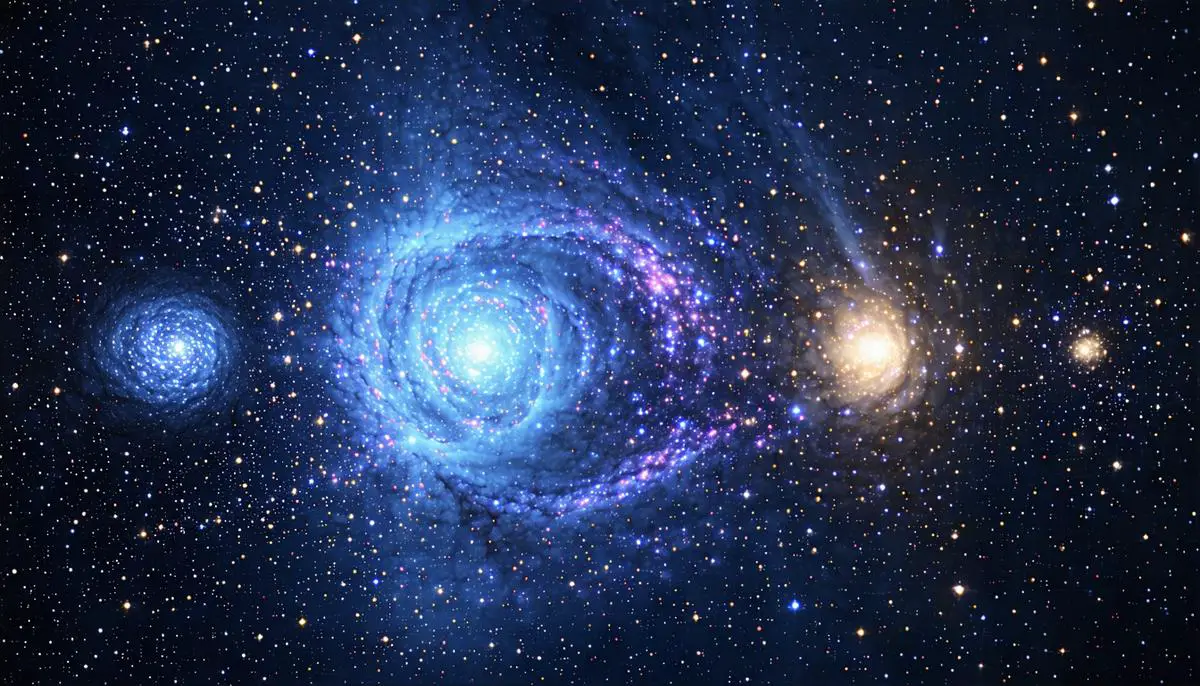In the vast expanse of the universe, cosmic phenomena such as dark matter, dark energy, and the cosmic microwave background present intriguing puzzles. These elements, while elusive, shape our understanding of the cosmos. As we advance in technology and methodology, our grasp on these celestial mysteries continues to evolve, offering fresh insights into the universe's grand design.
Dark Matter and Galaxy Formation
Dark matter, an unseen but influential cosmic component, plays a crucial role in galaxy formation. The standard cosmological model suggests that dark matter, moving slightly slower than light, gradually attracts ordinary matter through gravity, shaping the cosmic structures we observe today.
Recent simulations incorporating gas and dark matter interactions have yielded surprising results. These models suggest that small galaxies form more rapidly and shine brighter than previously thought, potentially challenging our existing understanding of cosmic evolution.
The James Webb Space Telescope aims to observe these bright, small galaxies. If successful, these observations could validate theories or hint at unknown phenomena, potentially reshaping our understanding of dark matter and its role in the universe.
Such discoveries would either confirm our foundational models or suggest new physics beyond our current grasp. While dark matter remains unseen, its effects across the universe continue to offer clues, gradually unraveling this cosmic mystery.
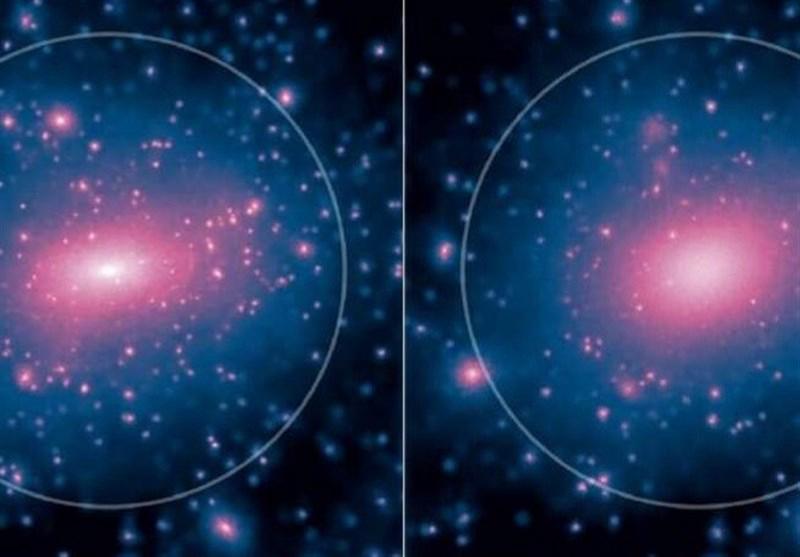
Cosmic Microwave Background and Early Universe
The cosmic microwave background (CMB) serves as a snapshot of the early universe, approximately 380,000 years after the Big Bang. This faint afterglow emerged when the universe cooled enough for atoms to form, allowing photons to travel freely for the first time.
By examining the CMB, scientists gather clues about the universe's initial conditions. The tiny temperature fluctuations in the CMB are not mere static; they represent the seeds of today's cosmic structures, guiding the formation of galaxies, stars, and galaxy clusters.
Observational cosmologists use the CMB to test theories of inflation and gain insights into the universe's composition and geometry. These minute differences offer hints about:
- The universe's shape
- Its uniformity
- The mix of baryonic matter, dark matter, and dark energy that define our cosmos
As telescopic technology continues to advance, our understanding of the CMB and the early universe grows richer, allowing us to study not just what is, but what was, and how the past shapes the future of our universe.
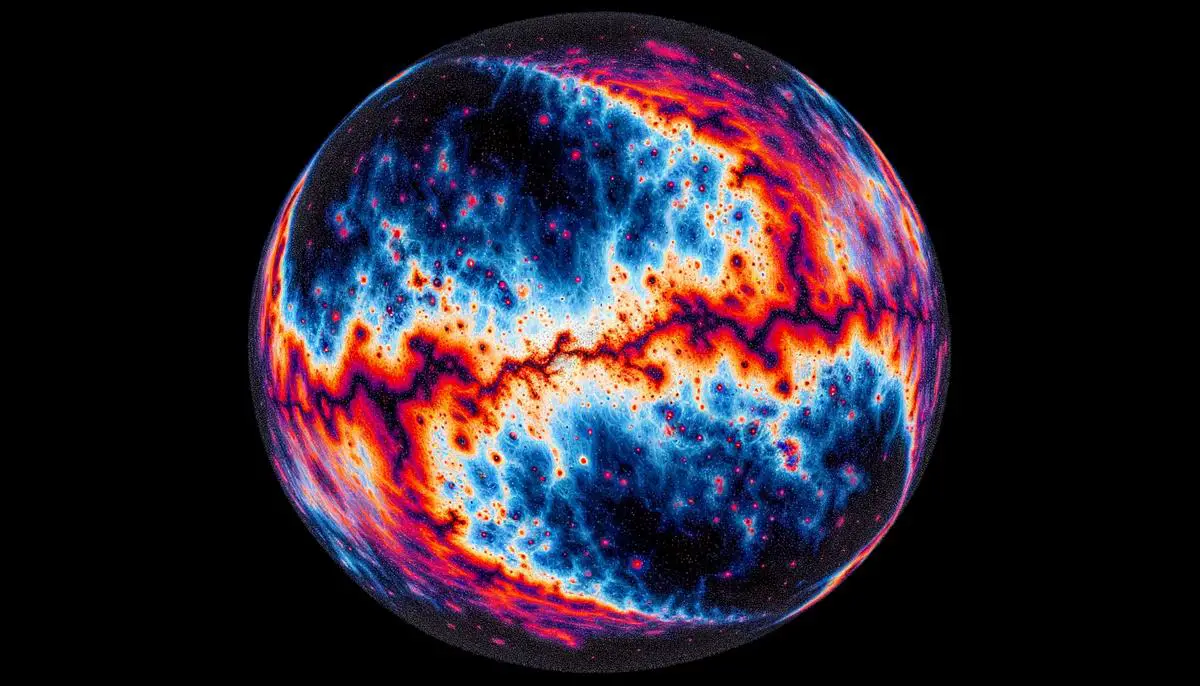
Dark Energy and Universe Expansion
Dark energy, an enigmatic force comprising about 68% of the cosmos, drives the accelerated expansion of the universe. This discovery in the late 20th century, based on type Ia supernova observations, challenged previous notions of a decelerating universe.
Cosmologists employ advanced instruments like the Dark Energy Spectroscopic Instrument (DESI) to study this mysterious force. DESI aims to chart over 50 million galactic epochs, probing dark energy's nature and its implications for cosmic evolution.
Understanding dark energy is crucial for determining the universe's ultimate fate. Will the expansion continue to accelerate, leading to a "Big Freeze"? Could it result in a "Big Rip," tearing apart galaxies, stars, and atoms? Or might dark energy's influence wane, allowing gravity to reassert dominance in a "Big Crunch" scenario?
As we explore dark energy, we edge closer to a more profound cosmic truth, potentially redefining our comprehension of reality's very fabric.
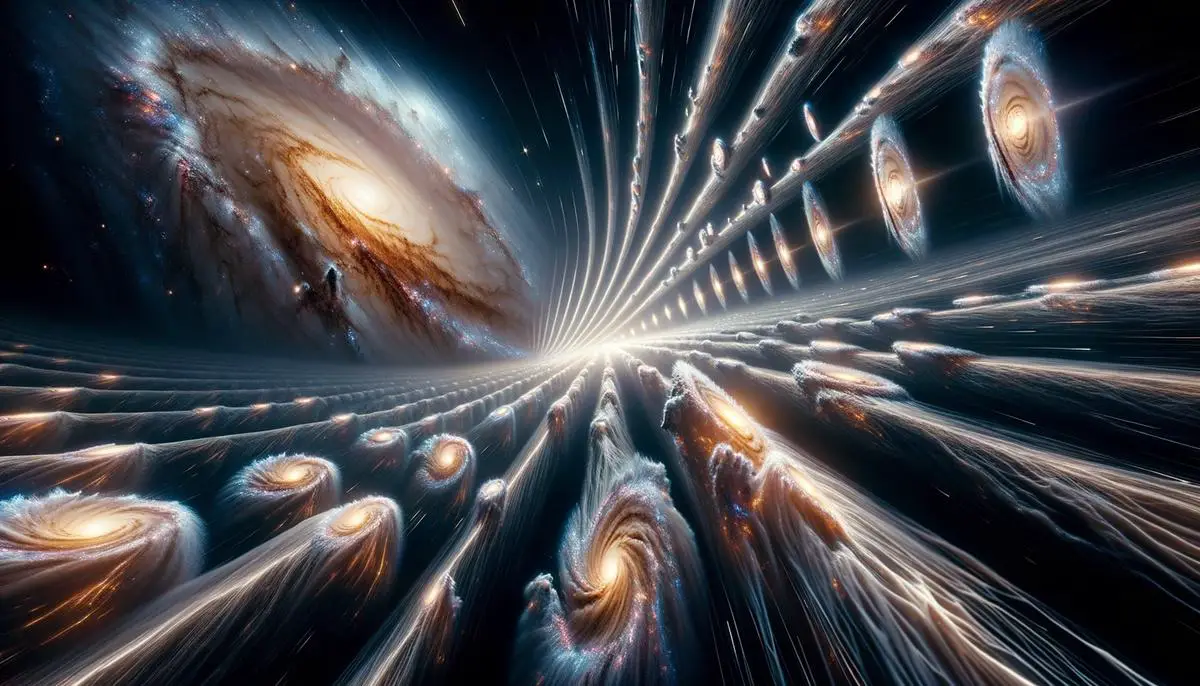
Advanced Telescopes and Observational Techniques
Modern astronomy employs increasingly sophisticated instruments to explore the cosmos. The James Webb Space Telescope (JWST) stands at the forefront, capable of peering through cosmic dust to reveal star-forming regions and nascent galaxies. Its infrared capabilities allow it to study the atmospheres of exoplanets, potentially uncovering signs of life beyond Earth.
The Dark Energy Spectroscopic Instrument (DESI) complements these efforts by mapping the universe's structure on an unprecedented scale. By capturing the spectra of over 50 million celestial objects, DESI aims to chronicle the universe's expansion history and shed light on the nature of dark energy.
Other projects contributing to our understanding of the cosmos include:
- Laser Interferometer Gravitational-wave Observatory (LIGO)
- Atacama Cosmology Telescope
These collaborative efforts exemplify the synergy between theory and observation in modern astrophysics. As these technological marvels continue to evolve, they promise to unveil new cosmic truths and potentially reshape our understanding of the universe.
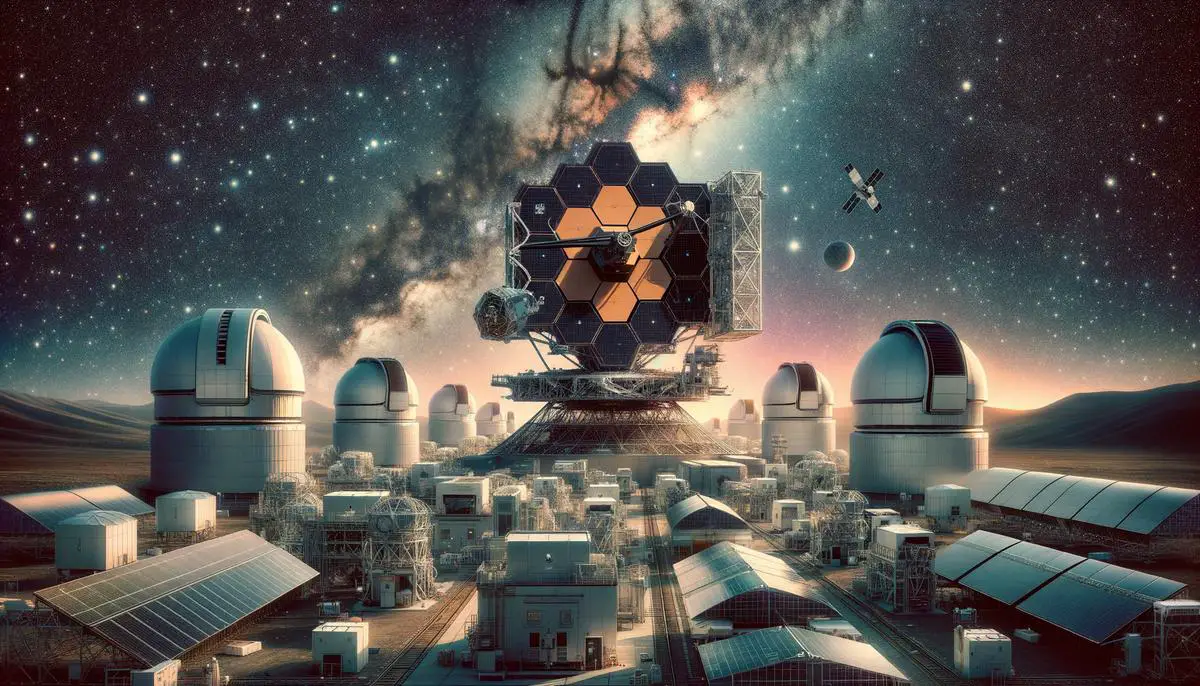
Artificial Intelligence in Cosmology
Artificial intelligence is revolutionizing cosmology, enabling researchers to extract insights from vast astronomical datasets. SimBIG, an innovative AI approach, enhances our understanding of galaxy distributions by analyzing spatial patterns and revealing subtle cosmic truths.
Machine learning models sift through simulated universes, each representing unique cosmic parameters. This process allows researchers to explore the universe's attributes from its earliest stages to the formation of complex structures.
AI techniques like SimBIG may offer clues to resolving the Hubble tension, a discrepancy in measurements of the universe's expansion rate. Such advancements could illuminate the nature of dark energy and potentially indicate new physics.
"If we measure the quantities very precisely and can firmly say that there is a tension, that could reveal new physics about dark energy and the expansion of the universe," says ChangHoon Hahn, lead author of a recent study on SimBIG.
By optimizing resource utilization in cosmic surveys and refining cosmological parameters, AI amplifies the impact of each observation. This marriage of artificial intelligence and cosmology opens new pathways for understanding the universe, transforming vast datasets into rich repositories of cosmological knowledge.
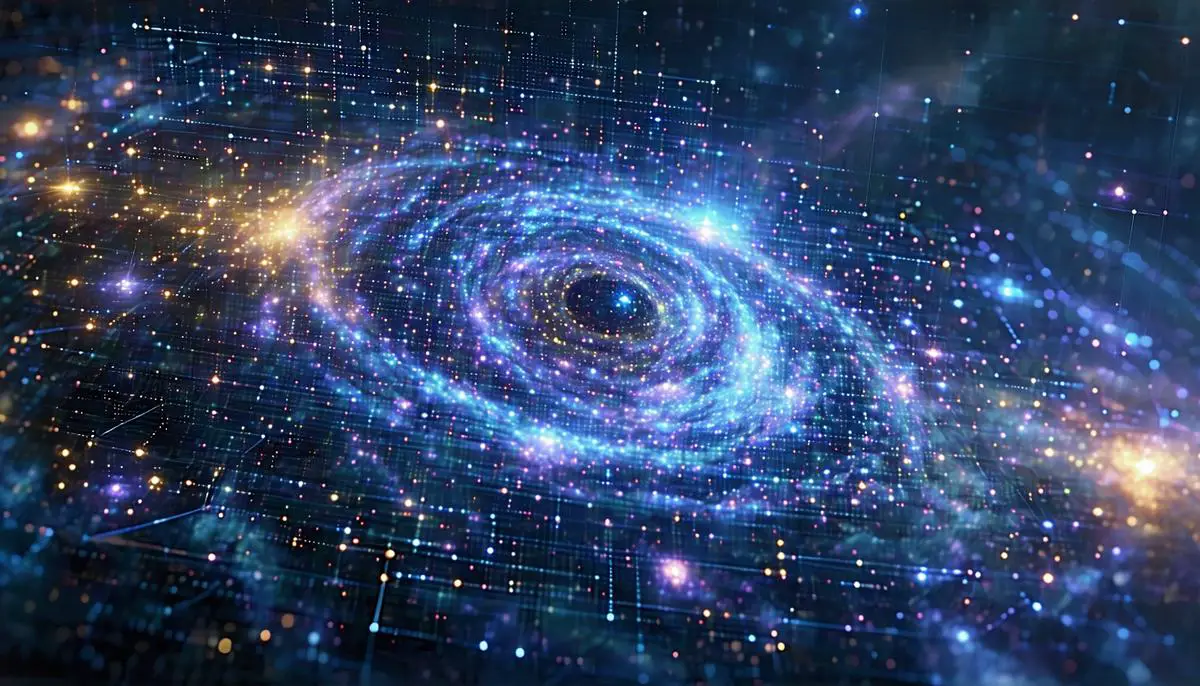
As we continue to probe the cosmos, our journey through space and time is guided by curiosity and innovation, promising new revelations about the nature of reality itself.
- Hahn C, Ho S, Parker L, et al. Simulation-Based Inference of Galaxies. Nature Astronomy. 2023;7:990-999.
- Spergel DN, Verde L, Peiris HV, et al. First-Year Wilkinson Microwave Anisotropy Probe (WMAP) Observations: Determination of Cosmological Parameters. The Astrophysical Journal Supplement Series. 2003;148(1):175-194.
- Perlmutter S, Aldering G, Goldhaber G, et al. Measurements of Ω and Λ from 42 High-Redshift Supernovae. The Astrophysical Journal. 1999;517(2):565-586.
![]()
